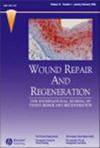Risk factors for venous ulceration in patients with varicose veins of lower extremities
IF 3.8
3区 医学
Q2 CELL BIOLOGY
引用次数: 0
Abstract
The aim of this case–control study was to explore the potential risk factors for venous ulceration in patients with varicose veins of lower extremities and to establish a simplified diagnostic score model. Seventy subjects with varicose veins of lower extremities and venous ulceration were compared with 1164 controls with varicose veins of lower extremities and no history of venous ulceration. Stepwise multivariate logistic regression analysis was used to identify the risk factors for venous ulceration. The steps in developing the diagnostic score model were based on the Framingham Heart study. The area under the receiver operating characteristic curve (AUC) was calculated to assess the diagnostic ability of the diagnostic score model. Multivariate analysis showed that men, overweight, obesity, longer duration varicose veins, deep venous valve insufficiency, low lymphocyte counts, and high fibrinogen concent were independently associated with an increased risk of venous ulceration. The AUC for the diagnostic score model was 0.75, which indicated good discriminatory ability. Special attention should be paid to the high-risk group of patients with lower extremity varicose veins. The diagnostic score model might be a useful screening tool for clinicians, policy makers, and patients.下肢静脉曲张患者发生静脉溃疡的风险因素
本病例对照研究的目的是探讨下肢静脉曲张患者静脉溃疡的潜在危险因素,并建立简化的诊断评分模型。70例下肢静脉曲张伴静脉溃疡患者与1164例下肢静脉曲张无静脉溃疡病史的对照组进行比较。采用逐步多因素logistic回归分析确定静脉溃疡的危险因素。开发诊断评分模型的步骤是基于弗雷明汉心脏研究。计算受试者工作特征曲线下面积(AUC),评价诊断评分模型的诊断能力。多因素分析显示,男性、超重、肥胖、持续时间较长的静脉曲张、深静脉瓣膜功能不全、低淋巴细胞计数和高纤维蛋白原浓度与静脉溃疡风险增加独立相关。诊断评分模型的AUC为0.75,具有较好的判别能力。高危人群下肢静脉曲张患者应特别注意。诊断评分模型可能是一个有用的筛选工具,临床医生,政策制定者和患者。
本文章由计算机程序翻译,如有差异,请以英文原文为准。
求助全文
约1分钟内获得全文
求助全文
来源期刊

Wound Repair and Regeneration
医学-皮肤病学
CiteScore
5.90
自引率
3.40%
发文量
71
审稿时长
6-12 weeks
期刊介绍:
Wound Repair and Regeneration provides extensive international coverage of cellular and molecular biology, connective tissue, and biological mediator studies in the field of tissue repair and regeneration and serves a diverse audience of surgeons, plastic surgeons, dermatologists, biochemists, cell biologists, and others.
Wound Repair and Regeneration is the official journal of The Wound Healing Society, The European Tissue Repair Society, The Japanese Society for Wound Healing, and The Australian Wound Management Association.
 求助内容:
求助内容: 应助结果提醒方式:
应助结果提醒方式:


